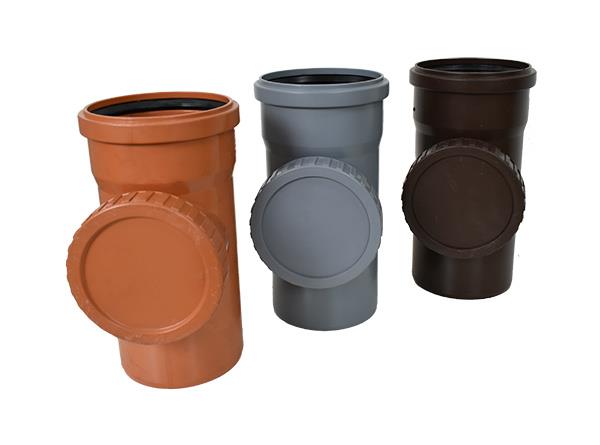Powoli spływająca lub zatrzymująca się woda, słyszalne bulgotanie, a czasami nawet nieprzyjemny zapach wydobywający się z rur kanalizacyjnych to sygnały oznaczające niedrożne rury. W takiej sytuacji powinniśmy jak najszybciej udrożnić rury kanalizacyjne. Może to bowiem doprowadzić do całkowitego zatkania rur. A co za tym idzie wylewania i cofania się wody z rur do pomieszczeń. Nie musimy wzywać hydraulika – możemy samemu wykonać udrażnianie rur. Podpowiadamy czym i jak profesjonalne udrożnić rury kanalizacyjne i co zrobić, aby zapobiegać niedrożnym rurom w przyszłości.
Co powoduje niedrożność rur kanalizacyjnych?
Rury kanalizacyjne w domach i mieszkaniach w większości przypadków zapychają się poprzez przedmioty lub substancje, które zalegają w odpływach:
- w przypadku łazienki to najczęściej: osady z mydła, odkładający się przez lata w rurach proszek do prania, paznokcie lub włosy.
- w przypadku kuchni natomiast: resztki jedzenia, tłuszcze, czy gromadzące się skrawki opakowań z różnych materiałów.
Niedrożność rur kanalizacyjnych spowodowana może być także brudną wodą. Czyli taką, która wcześniej używana była do mycia podłogi lub podczas prac budowlanych. Jest ona bowiem zanieczyszczona np. piaskiem, klejem lub zaprawą.
Zwykle zatykają się syfony od umywalek, wanien, czy brodzików, odpływy podłogowe lub rury kanalizacyjne, złączki i kształtki tworzące wewnętrzne systemy instalacji sanitarnej, których zadaniem jest odprowadzanie ścieków z budynku do zewnętrznej sieci kanalizacyjnej. Czasami jednak problem może tkwić znacznie głębiej – zatkane, niedrożne mogą być zewnętrzne rury kanalizacyjne, np. przyłącze do szamba w przypadku domów jednorodzinnych, które nie mają połączenia z ogólną siecią kanalizacyjną lub połączenie z miejską siecią wodno-kanalizacyjną.
Metody udrażniania rur w domu
Do udrażniania, odtykania rur najczęściej używana jest sprężyna (spirala). To zwinięty stalowy drut, który na jednym końcu posiada ostrą końcówkę, a na drugim korbę. Zasada działania tego urządzenia jest bardzo prosta. Spiralę wprowadza się do zatkanej instalacji sanitarnej przy jednoczesnym kręceniu korbą. W momencie, gdy drut natrafia na przeszkodę – zator rozbija go. Najlepiej, jeżeli dwie osoby obsługują spiralę. Jedna wprowadza spiralę do instalacji sanitarnej, a druga kręci korbą do momentu przepchania, udrożnienia. Sprężyny są dostępne w różnych długościach – sprawdzają się także przy zatorach, które powstają głęboko w rurach. Można także spotkać spirale w wersji elektrycznej.
Doraźnym rozwiązaniem w przypadku zatkanej toalety, odpływów, syfonów, czy rur w mieszkaniu, domu jest standardowa przepychaczka, którą większość z nas ma w domu. Gdy chcemy tym sposobem udrożnić rury od zlewozmywaka dwukomorowego, drugi odpływ należy zatkać korkiem.

W budownictwie wielorodzinnym ścieki z poszczególnych mieszkań odprowadzane są do rur pionowych. Następnie do piwnic i dalej do sieci zewnętrznej. Do czyszczenia i sprawdzania drożności pionowych odcinków rur służą czyszczaki (rewizje).
Do czyszczenia zewnętrznych sieci kanalizacyjnych, których średnica wynosi powyżej 100 mm, konieczna jest interwencja specjalistycznego pojazdu – samochodu ciśnieniowego kombinowanego.
Jak zapobiegać niedrożności rur kanalizacyjnych?
Nie zawsze możemy całkowicie zapobiec powstawaniu niedrożności w rurach kanalizacyjnych. W wielu sytuacjach jestśmy w stanie poradzić samemu, wystarczą odpowiednie narzędzia (o których pisaliśmy wcześniej). Ponadto, jeśli zadbamy o odpowiednią profilaktykę powinniśmy uniknąć nieprzyjemnych niespodzianek. Prostym i bardzo pomocnym rozwiązaniem jest zastosowanie sitka w odpływie z wanny, czy zlewu. W starym budownictwie stosowano rury żeliwne, które są podatne na zatykanie się. Współcześnie wymienia się je na rury plastikowe, takie jak np. Rura kanalizacyjna zewnętrzna PVC 110×3,2×500 SN8 ML, czy Rura kanalizacyjna wewnętrzna PP HT 110.
